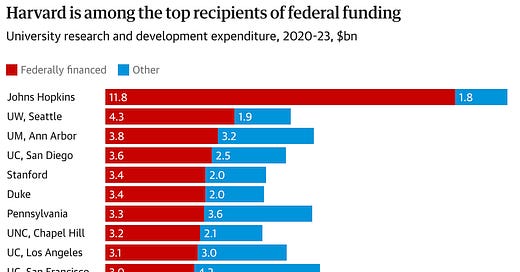Weekly Intent: Federal Funding in the Ivy League
Reworking our weekly check-in into written form for easy scrolling, shareable links, and topical discussions. Plus announcing my second Substack newsletter, completely free and full of the fun stuff.
Keep reading with a 7-day free trial
Subscribe to Politics on Purpose to keep reading this post and get 7 days of free access to the full post archives.



